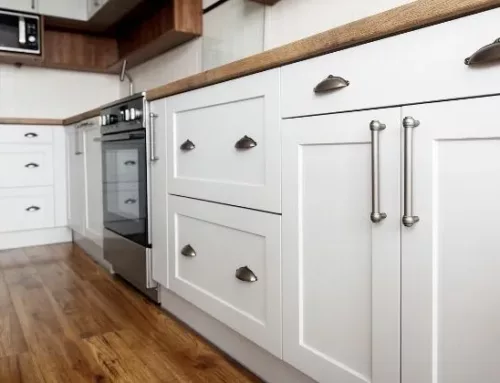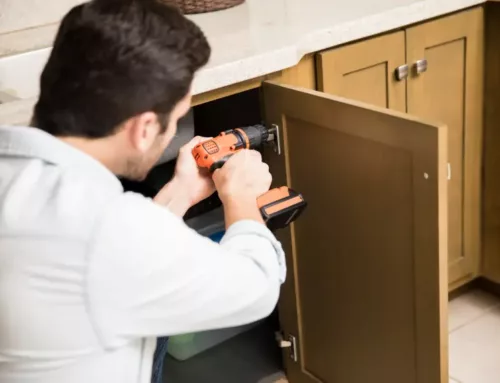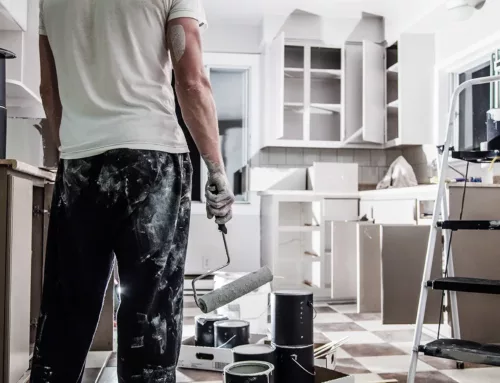Table Of Contents

Your home’s siding is like a cocoon. It protects the structure of your house and everything inside from environmental factors like the weather, temperature, and pests. A lot like cocoons, siding doesn’t last forever. However, instead of helping the rest of your house turn into something beautiful at the end of its lifespan, old siding diminishes your home’s curb appeal and can’t protect your home anymore.
How Long Does Siding Last?
Though siding isn’t permanent, it can last for an impressively long time — given adequate care. Maintaining your siding is the key to ensuring it can do its job for as long as possible. What does siding maintenance entail, exactly? It may sound like a lot of work, but is it? In this handy guide, we’ll discuss simple ways to care for home siding, so it can serve your house as long as possible.
Pro Tip: Most siding materials can last around 20-40 years. Fiber Cement siding has the lowest amount of maintenance requirements and can last up to 50 years (“What Is The Lifespan Of Your Vinyl Or Fiber Cement Siding?”).
Why Is Siding Important?
Siding serves both a functional and cosmetic purpose for your home. It protects your home’s structure, foundation, and contents (“The Importance of Siding on Your Home”) from external elements. No one wants to have a living room covered in rain, snow, mud, or littered in pests, and siding ensures that the weather remains outside where it belongs.
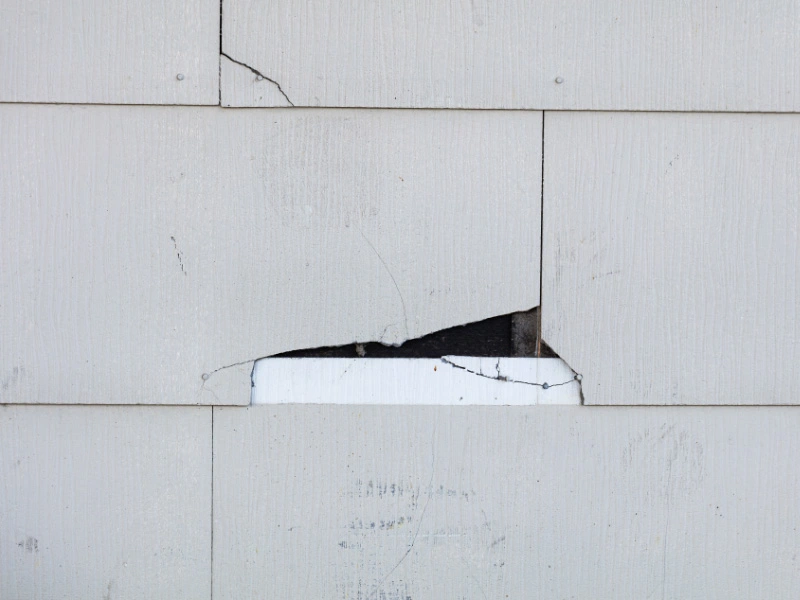
Siding also keeps heated air from your HVAC system from escaping through the walls. If your siding is damaged, air can leak out. This forces your heating and cooling unit to overexert itself (“How a Siding Upgrade Improves Your Home’s Energy Efficiency”), which raises your energy bills and makes it harder for your home to stay warm or cool.
If you’ve ever passed by new home construction before, you’ve probably seen what houses look like without siding. It’s not pretty. For the most part, these homes look unfinished and unlivable. Once the new siding is on, they look great! Siding can make or break the appearance of a house. Keeping it clean and up to date (“What Are the Benefits of Regular Maintenance for My Siding?”) is just as important for protection as it is for appeal.

General Maintenance Tasks

Dirty siding (“Dirty Siding: 3 Primary Culprits and How to Avoid Them”) can decrease your home’s curb appeal and value, but well-maintained and clean siding can boost them. To keep siding maintained, there are a few basic maintenance tasks you need to perform regardless of what material your siding is. These tasks include a yearly or biyearly inspection and an annual clean.
Inspect Siding
Siding inspections (“Siding Inspection Tips”) are vital because they help you detect problems with your siding before they become out of control and outrageously expensive to repair. Once or twice per year, walk around your home and carefully examine the siding for signs of damage. Common siding problems you should look for include:
- Buckling
- Cracking
- Discoloration
- Holes
- Melting
- Mildew and mold
- Rust
- Scratches
- Warping
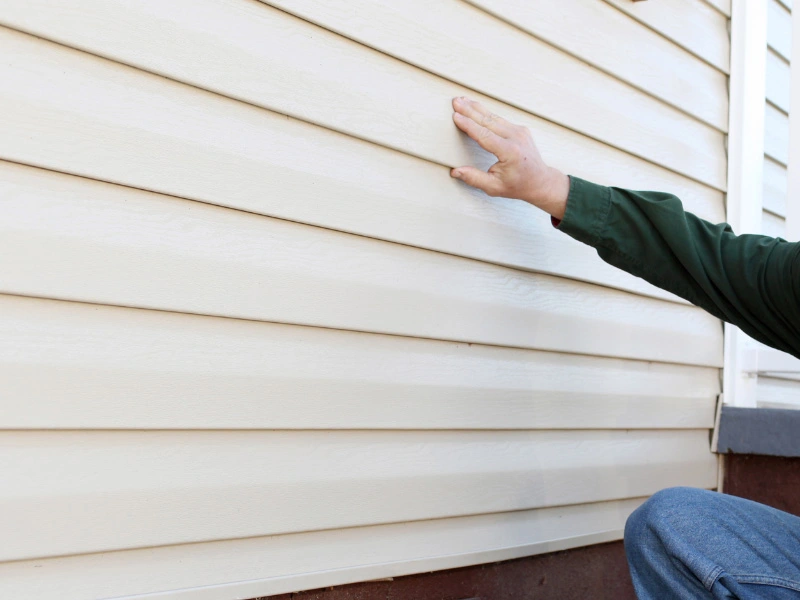
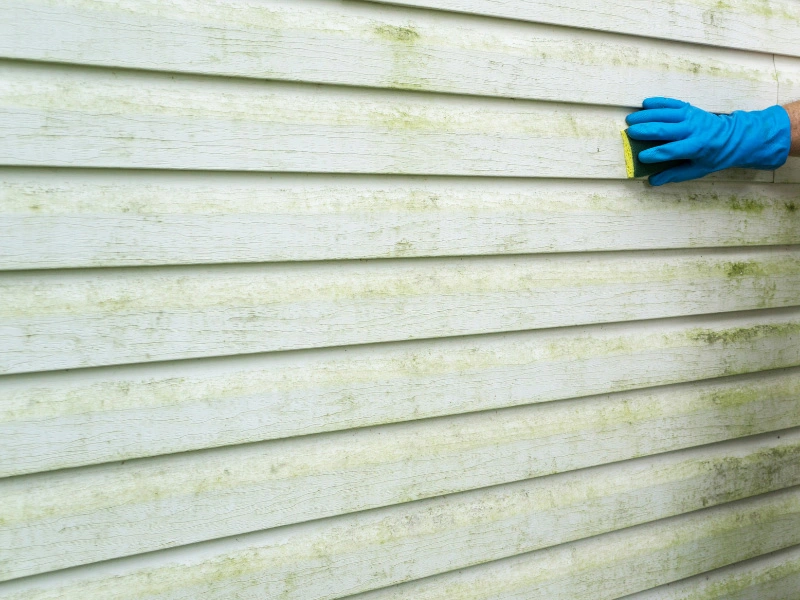
Clean Siding
All types of siding become dirty over time. Repeated exposure to the elements will cake siding in dirt, mildew, mud, and other stubborn debris. You can clean your siding yourself or hire a professional to do it. The smaller your home and the fewer stories it has, the easier it’ll be to wash, but the larger and taller your home, the harder it’ll be to clean.
Want to clean your siding yourself? Hose it down with a garden hose and then use warm, soapy water and a soft-bristled brush to remove whatever’s left behind. For mildew removal, use white vinegar mixed with water (Clarke)– for something stronger, use a solution that’s one part bleach to four parts water.
Pro Tip: Keep in mind that a professional deep cleaning with professional cleaning tools will yield much better results than a DIY clean.
How To Specifically Maintain Different Types Of Siding
There are multiple types of siding, and each kind requires specialized care. Here are some special maintenance tips to care for home siding for six of the most common materials—brick and mortar, fiber cement, steel, stucco, vinyl, and wood.
Brick And Mortar
Brick is a lot more demanding than it looks! When cleaning brick and mortar siding, it’s recommended to do the “soft washing” method (“Can You Power Wash a Brick House?”). You can use a brush, hose, and mild detergent. Brick is one of the few kinds of siding that you should never power wash because it can damage the mortar, caulking, and paint.
After cleaning, check brick and mortar for any cracks or outdated sealant. Apply a silane or siloxane-based sealer (“Brick Siding Cleaning and Maintenance Tips”) every 3-4 years (“Brick Masonry Sealing and Waterproofing | Help Center”) to keep moisture out of your siding. Preventing moisture from entering your brick siding will prevent efflorescence and spalling, both of which cause structural damage (“Is Efflorescence Harmful? What Causes It & How to Remove”).
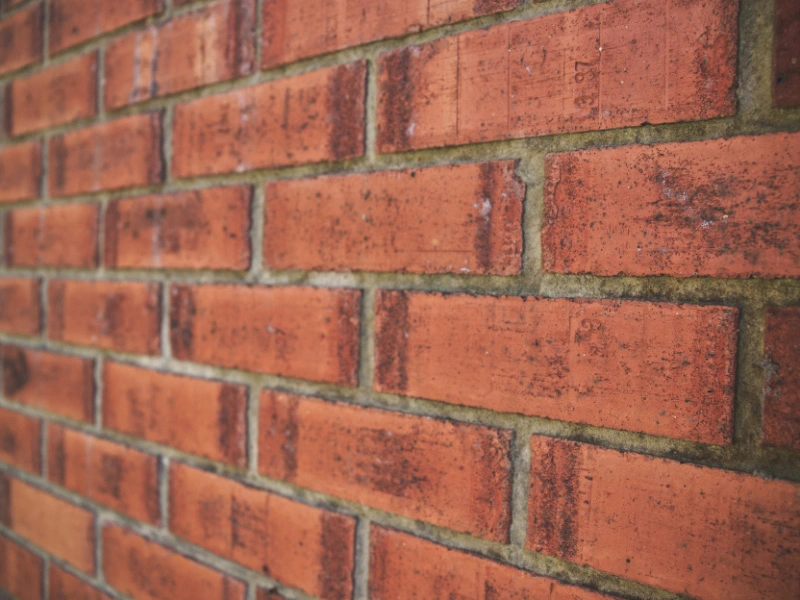
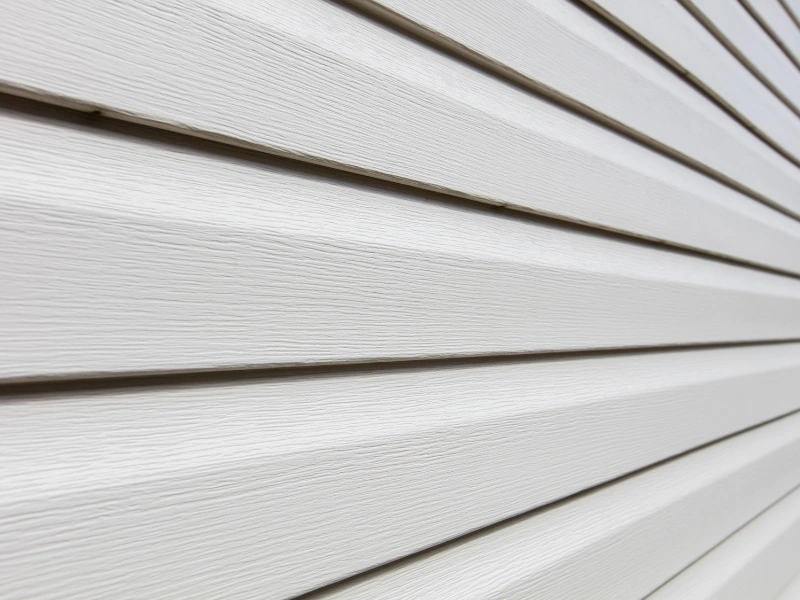
Fiber Cement Siding
Fiber cement siding is generally low maintenance. It is easily cleaned with a soft bristled brush, cloth, or low pressure water hose (Hardie). However, its color can fade over time. You can have your home painted by professionals every 10 to 12 years (Sisk) to keep the color of your home looking fresh and new. If you want to paint fiber cement siding on your own, be sure to use exterior-grade acrylic paint.
Pro Tip: JK Paint & Contracting offers professional painting services for siding in and around the Portland area. We also offer siding updates, repairs and replacements. Contact us if you need help renewing the exterior of your home.
Steel Siding
Steel siding is remarkably durable, but repeated exposure to storms, flying debris or being constantly scratched by tree branches can cause scratches which lead to rust and corrosion. You can use a nonabrasive stainless steel scratch remover to try and remove small scratches before they begin rusting. If rust has already appeared, use a wire brush to scrub off as much as possible. Whether rust has appeared or not, prime scratches with a rust-inhibitive primer, and paint over the area (McCutcheon).
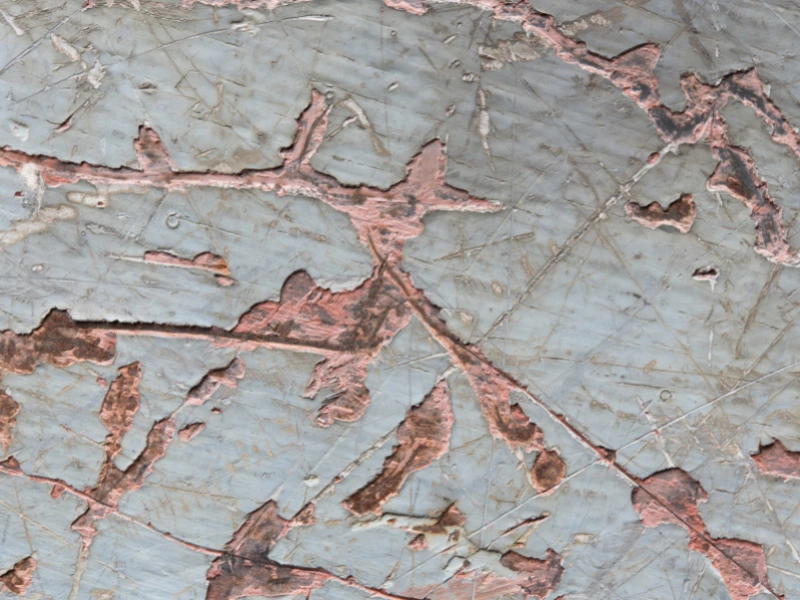
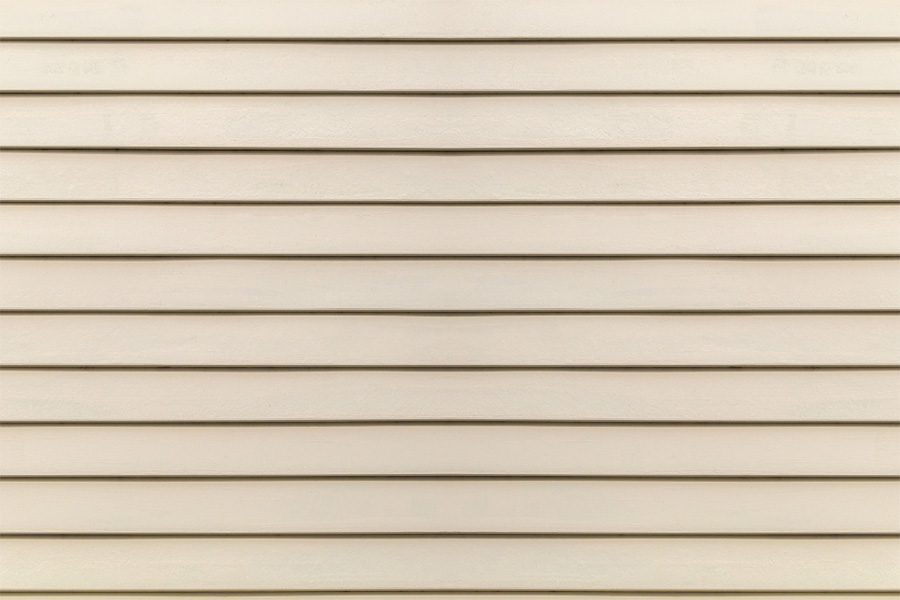
Vinyl Siding
Vinyl siding is more prone to damage than some other types of siding, which is why it’s good to inspect it annually and especially after strong winds and big storms. To clean vinyl, all that’s needed is a soft bristled brush or soft cloth and water (“Homeowner Resources: Vinyl Siding Care and Maintenance”). Vinyl paint should last up to 10 years (“Can You Paint Vinyl Siding?..”), as long as it is receiving proper yearly maintenance. However, paint can fade quicker in sunnier climates, so keep that in mind when deciding when to repaint your home.
Pro Tip: Due to vinyl warping and flexing in fluctuating temperatures, paint maintenance may need to be constantly (Simpson). Ask professional painters the best way to upkeep the paint on your home.
Wood Siding
Wood siding needs to be maintained every two to five years. You can keep wood siding protected from moisture and other weather elements by painting, sealing, and staining it (“How Much Maintenance Goes into Wood Siding?”). Making sure these procedures are kept up will prevent chips, cracks, and rot/mold. Wood is also prone to discoloration. If this seems to be an issue after your exterior inspection, it can be fixed with a wood cleaner or brightener (“Use Wood Brightener Before Staining Your Deck”).
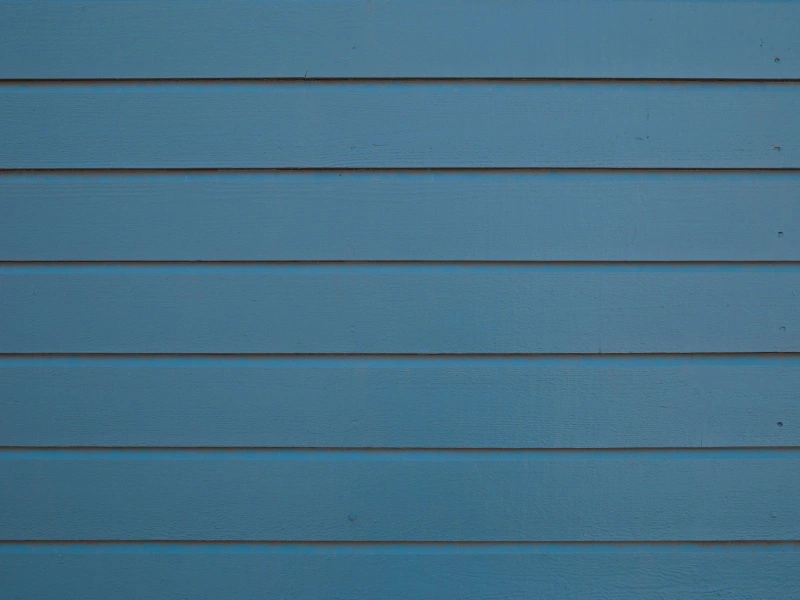
Professional Siding Upkeep And Painting In And Around Portland
Are you looking for professionals to come and help with keeping your siding upgraded? Give JK Paint & Contracting a call. Our experienced siding and painting contractors will work with you to ensure your siding is well taken care of.


